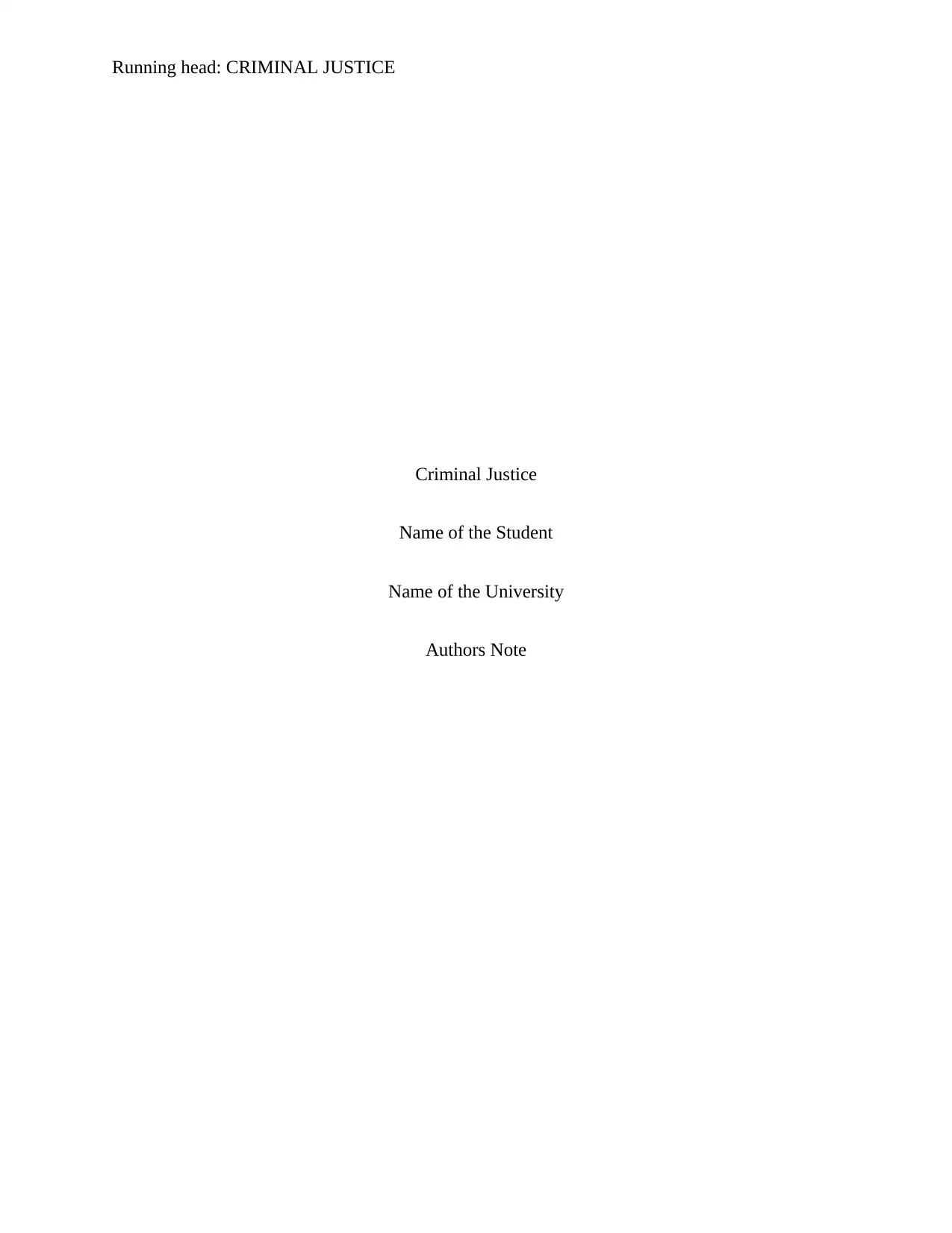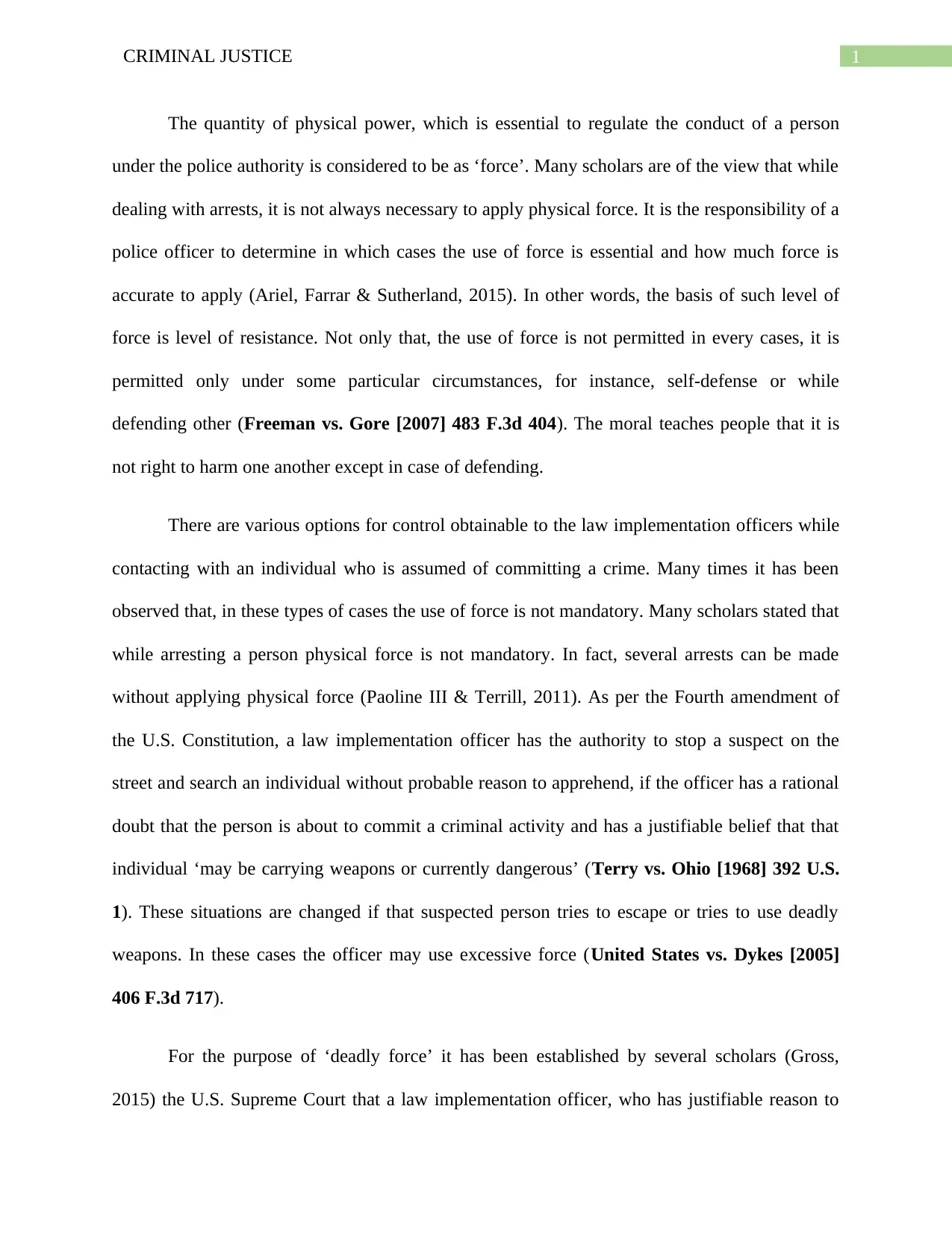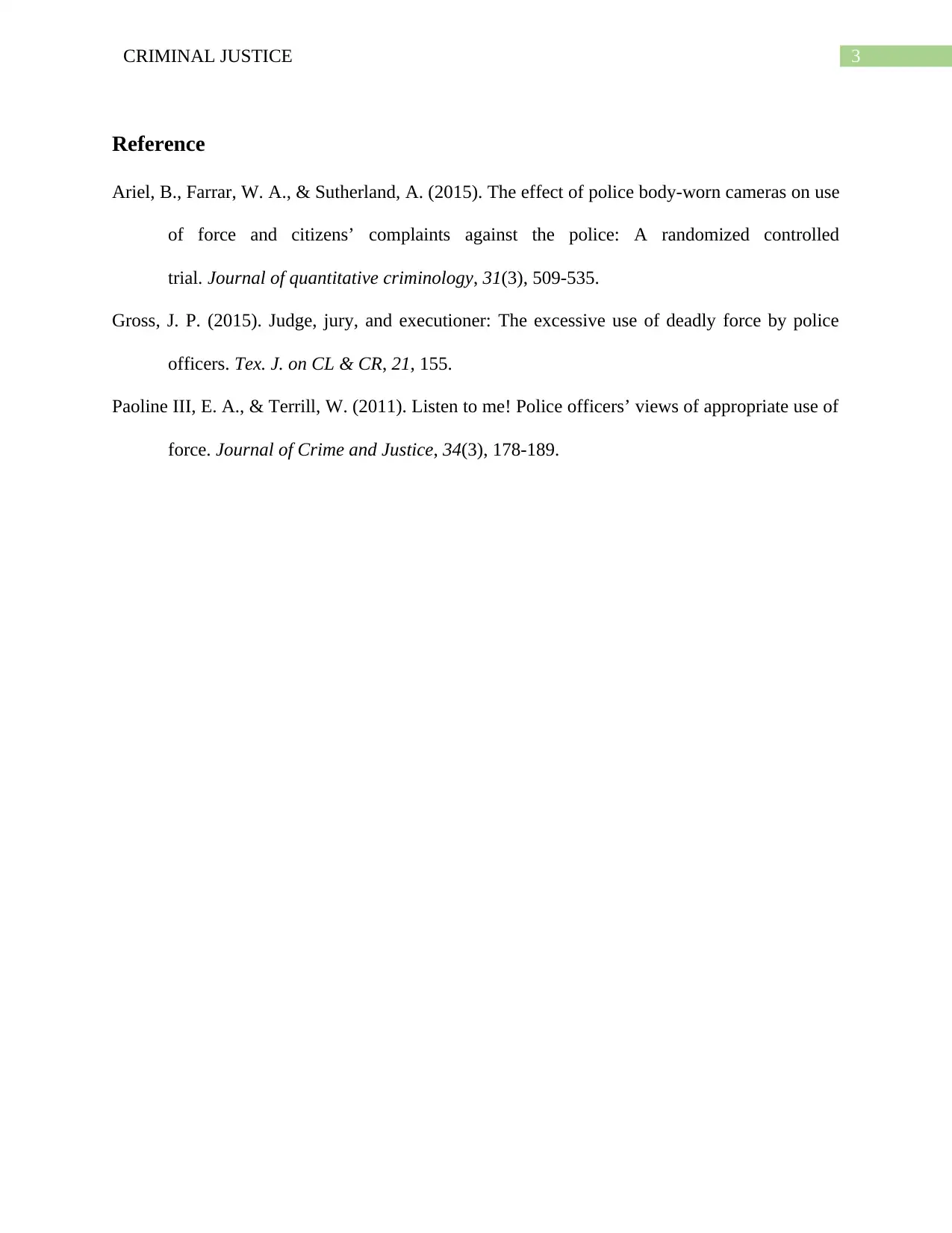Criminal Justice Report: Analysis of Police Use of Force Cases
VerifiedAdded on 2022/08/15
|4
|595
|13
Report
AI Summary
This report examines the use of force within the criminal justice system, focusing on the authority and limitations placed on law enforcement officers. The report delves into the nuances of physical force, the legal framework, and the circumstances under which it is permissible, such as self-defense or when a suspect poses a threat. It discusses the importance of the Fourth Amendment and the legal parameters surrounding searches and arrests. The report highlights the concept of 'deadly force' and references U.S. Supreme Court rulings like Tennessee vs. Garner, emphasizing the justifiable use of lethal force to prevent severe injury or escape. The report also provides references to relevant scholarly articles, which gives a comprehensive overview of the topic.
1 out of 4






![[object Object]](/_next/static/media/star-bottom.7253800d.svg)